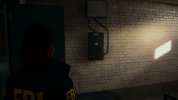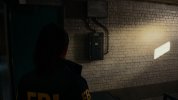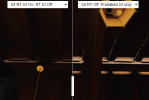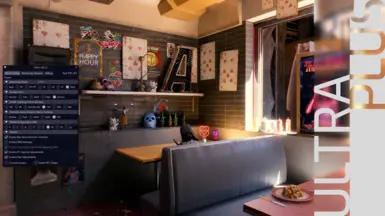Those flickering shadows are minor differences, not major. Most of the times, the differences are just visible in cherry picked scenes. And they are certainly not worth the heavy performance loss.
View attachment 9972
This is the difference you'll see most of the time, and personally I don't care about flickering shadows. If the overall visuals are not improved signifcantly in every scene for THAT performance loss, then it's not worth it. There's an entire video by DF where you can see the differences between maxed out PC and console versions are minor.
Just an absolutely horrible visuals to performance ratio that is completely inacceptable. Same as Ultra Performance mode or 30 FPS on a high end Ampere GPU.
And now compare that to the RTGI found in Metro Exodus Enhanced Edition which transforms EVERY scene to a point where everything looks completely different and runs at 1080p 60 FPS on an RTX 2060. This is what I call efficient. (Before you comment, I'm aware Alan Wake 2 is doing a lot more than Metro and is just performance intense in general, I'm speaking about the raytracing solution here with a comparison point of the older game without RT and the Enhanced Edition)
Why do we just accept how Alan Wake 2 performs with Raytracing? They could easily have built in a hybrid Raytracing mode with reflections as well as some hybrid RT shadows and I guarantee you it would look almost the same as the maxed out path tracing version for a fraction of the performance cost.
And yes, my friend was already using optimized settings and aggressive DLSS presets. 60 FPS was not possible near the end of the game with any sort of Raytracing enabled. The forest from the beginning is not the heaviest scene at all and he played through the entire game.
The game was absolutely not made with RT in mind and you can clearly see that. It was made for the consoles and Nvidia later tacked on a path tracing solution, that only runs well enough on Lovelace (and even that struggles a lot).
Normally I'm a huge fan of any sort of Raytracing, but in this game my clear recommendation is to turn everything off. It's clearly not worth it.






